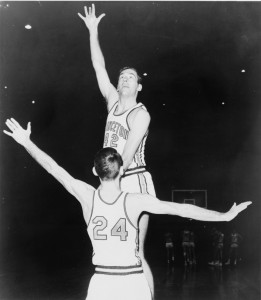In the Old Days: College Athletic Programs That Used To Be Powerhouses 30

The Princeton football program was once more dominant than USC, Alabama or Florida have been in recent generations..
College sports fans often complain about the disparity between the “haves” and “have nots.” In college football, Alabama, Notre Dame, USC and Oklahoma own a bulk of the national titles from the last 90 years. In college basketball, UCLA, Kentucky, Duke, North Carolina, Indiana and Kansas are the dominant six that have presided over the sport over last several decades. While parity may never truly take hold, the powerhouses will likely change over time, as evidenced by the examples of former powerhouses provided below. These programs aren’t nearly as dominant — or nearly as relevant — as they were years ago, but they’ll always have those glory years in which they immeasurably contributed to the evolution of major college athletics.
Princeton Tigers football
With 28 claimed national titles, even Alabama fans are taken aback by Princeton’s early dominance. The Tigers were early adopters of the sport, a variant of rugby, participating in the first-ever football game against Rutgers on November 6, 1869. They lost 6-4, but won the rematch a week later, leading to a split of the first national title. During the first 40 years of college football, the Tigers won 22 national titles, an era of success unparalleled by any other college athletic team — save for their rivals at Yale. Their last national title came in 1950, which was followed by Dick Kazmaier’s Heisman Trophy-winning season in 1951, the only time a Tiger has won the award.
Yale Bulldogs football
During the late 19th century, college football became more structured, closer resembling the sport we know today. Head coaches were being hired for the first time, perhaps the most notable of which was Walter Camp, the “Father of Football,” who finished his playing career at Yale six years before he was hired. He tallied a 67-2 record at the helm, capturing three national titles. None of his successors lost more than two games until 1914, 22 years after he left the program. The foundation he nurtured is the primary reason Yale ranks second all-time in wins behind Michigan, boasts 28 College Football Hall of Fame inductees — such as Amos Alonzo Stagg — and two Heisman winners.
Harvard Crimson football
Yale’s archrival isn’t quite as accomplished, but possesses a rich history of success consisting of 12 national titles and 20 College Football Hall of Fame inductees. Although the Crimson’s last claimed national title came in 1920, a year in which it defeated Oregon in the Rose Bowl, it remains the eighth winningest program in college football history. Their most cherished wins have come in “The Game” — though they trail the series 54-65-8 — which has been played since 1875, making it the second-oldest continuing rivalry in college football. Many of the sport’s rules and traditions were born during the yearly event. Read the rest of this entry →
